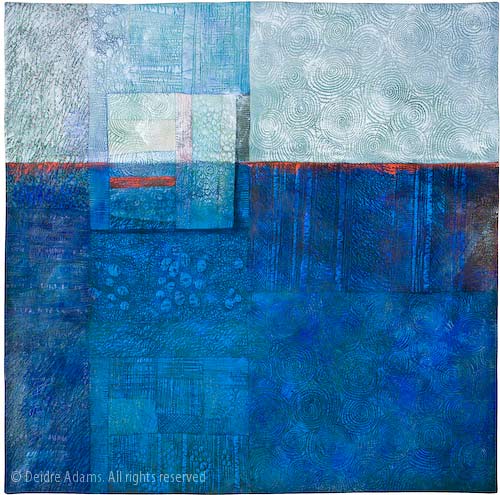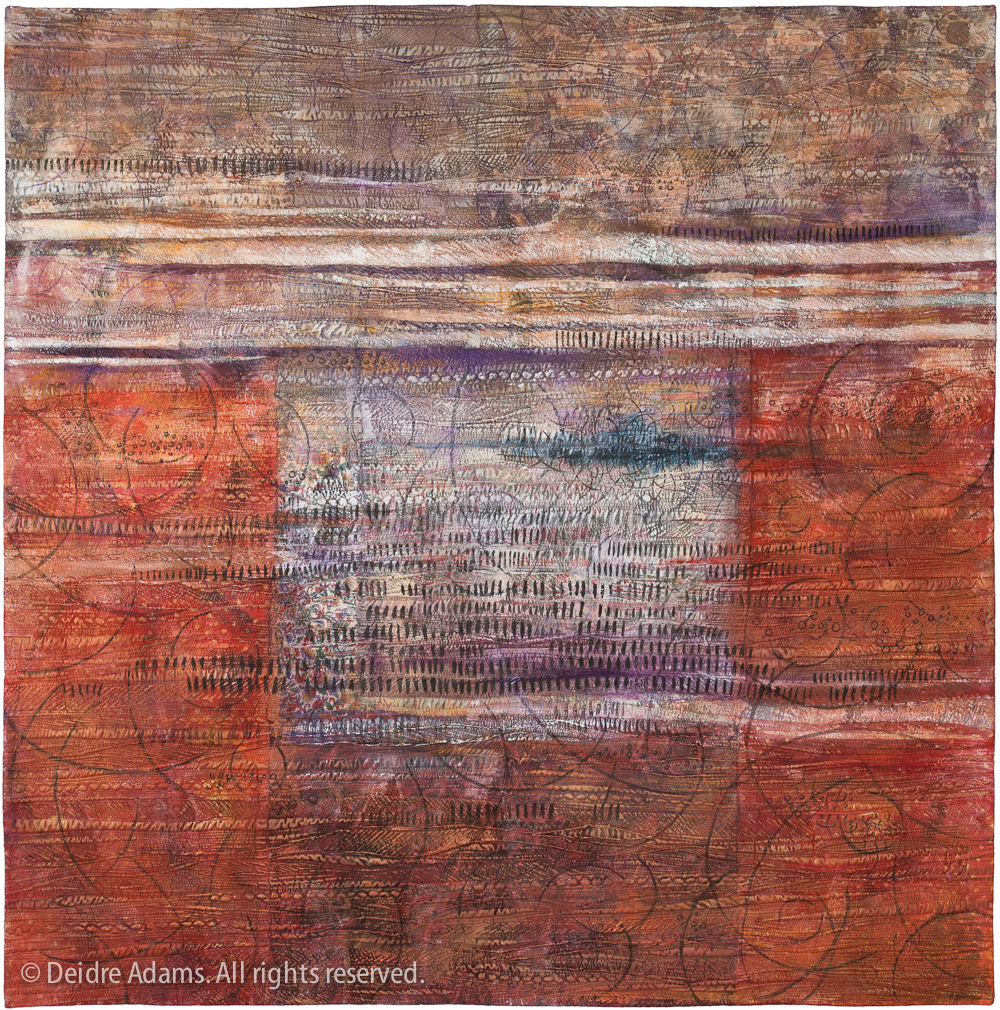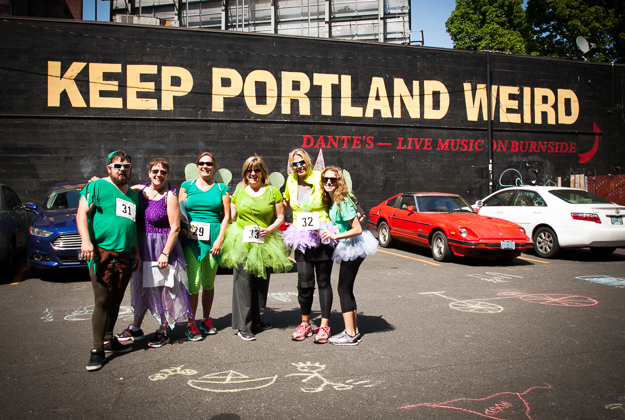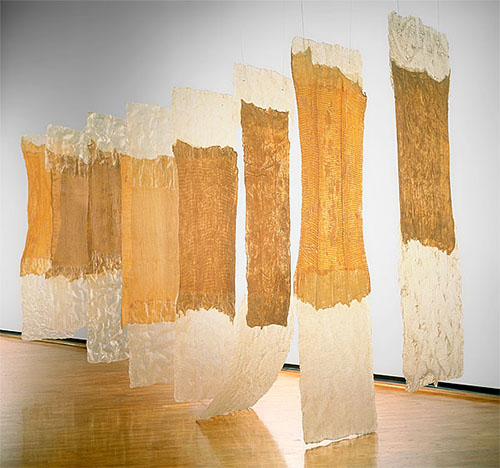
Composition VIII, 39 x 39, ©2008 Deidre Adams
Ahh, Quilt National. The Holy Grail of art quilting excellence. The Nirvana to which all we faithful makers of quilted textile art aspire! Its fickle clarion call, beckoning faithfully once every two years, cannot be ignored nor disdained. Each time it comes around, I faithfully put together my entry, being careful to follow all of the rules lest I end up that most pitiable of creatures, the person who gets summarily kicked out in disgrace — what fate could be worse than that? Each time then, I hold my breath, hoping, waiting…
And all but one of those times for the past 5 shows, has come the rejection. No, they say, you are not worthy. Go back and do not darken our door again until you have sweated and slaved and produced a masterpiece from which we do not recoil in horror.
All kidding aside, though, I did receive my rejection notice from QN a couple of weeks ago. And it’s true what they say: the more rejections you get, the easier it becomes to shake it off and move on. Plus, since the initial notice came by e-mail, it really did seem inconsequential to me this time. None of that anticipation as when you pull the envelope out of the mailbox, fingering it carefully, trying to figure out if all the slides you sent them have come back to you.
The piece above, Composition VIII, is one of the works I had entered this year. I feel in my heart that it is without doubt the finest work I have ever made. It expresses precisely and without fuss exactly what it is I am trying to say with my work. (Does that sound amazingly conceited? I was told by someone yesterday that I self-censor way too much, so perhaps that statement is a bit of a passive-aggressive reaction to that idea.) So I say to you, Quilt National, your loss!
Other people that I’ve shown this piece to have had lukewarm reactions to it also, so it’s yet another example of a paradox that I often find in making art. The work that I think is positively my best doesn’t seem so to others, and the things I get the best reactions to are often those that I feel weren’t particularly strong. Does this mean I’m not a good judge of my own work? Perhaps yes, perhaps no. In either case, it’s proof once again that you really need to make work for yourself and not be trying to guess what others might like or what might be sellable.
Possibly another reason why the QN rejection didn’t bother me too much is that during the months of October and November this year, I will be having a solo show at Translations Gallery. This is very exciting news for me, and I’m certainly honored to have this opportunity. The gallery owner and manager have a lot of great ideas for promoting the show, including hiring a professional production company to make a video about my art. There have been two sessions of taping so far, a nerve-wracking experience for me, but they were great at working with me to get through my fears. I can’t wait to see the final result.
I’m busily making some new pieces to go in this show, and I am also getting some of my photography together to include with the exhibit. It’s a lot to pull together in the couple of weeks I have left, but I have some good ideas and lots of energy right now. Fall is always a good time for me.
 Composition IV, 42 x 42 inches, acrylic paint on stitched textile. ©Deidre Adams
Composition IV, 42 x 42 inches, acrylic paint on stitched textile. ©Deidre Adams


